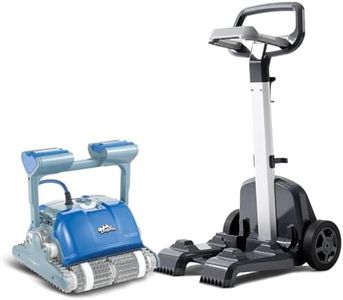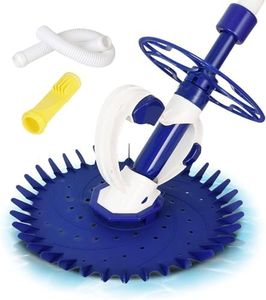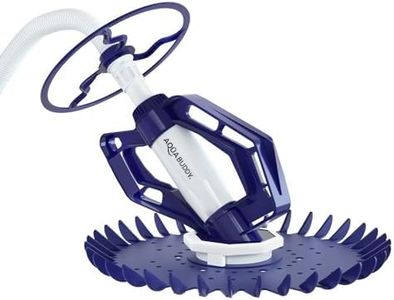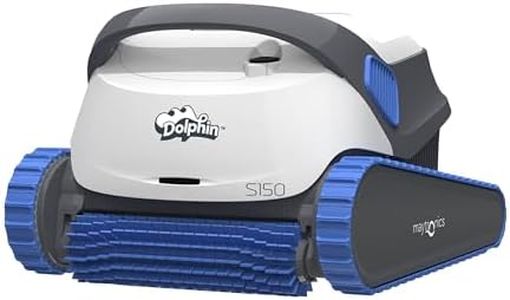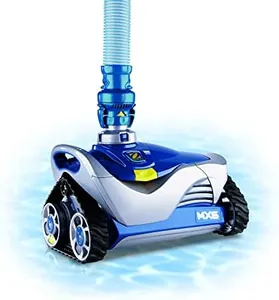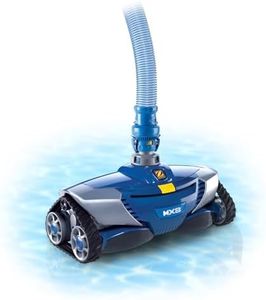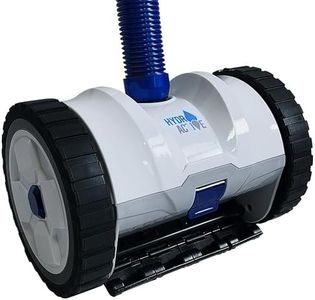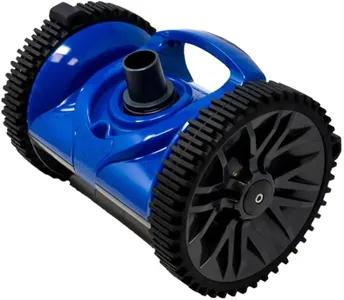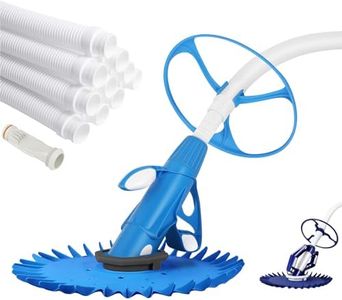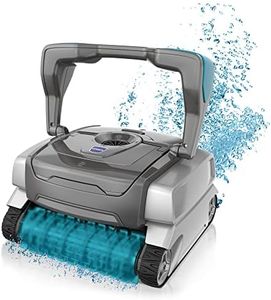We Use CookiesWe use cookies to enhance the security, performance,
functionality and for analytical and promotional activities. By continuing to browse this site you
are agreeing to our privacy policy
10 Best Suction Pool Cleaners
From leading brands and best sellers available on the web.Buying Guide for the Best Suction Pool Cleaners
Choosing a suction pool cleaner can make pool maintenance much easier, but it's important to pick one that fits your pool's size, shape, and debris types. Start by considering the type of pool you have—inground or above ground—and think about the debris you typically find, like leaves, sand, or larger dirt particles. Suction cleaners rely on your pool's filtration system to work, so understanding your system's capacity and connections is key. List your main needs—such as regular cleaning frequency, type of dirt to pick up, and pool surface—to help you focus on the specs that matter most for you.Pool CompatibilityPool compatibility means whether the cleaner can work efficiently in your specific pool type, either inground or above ground, and with your pool surface—like vinyl, fiberglass, or concrete. If you have an inground pool with steps and curves, you'll need a cleaner designed for maneuverability and durability on hard surfaces. For above ground pools or softer surfaces, look for models with gentler wheels or brushes. Make your choice by matching the cleaner's recommendations with your pool's material and structure.
Suction Power RequirementSuction power requirement refers to how much force the cleaner needs from your pool pump to work properly. Lower powered cleaners may run with smaller pumps, while higher suction models need a stronger, more powerful pump. If your current filtration system has low horsepower or smaller capacity, choose a cleaner designed for lower suction; if you have a robust system, you can consider those that draw more power for deeper cleaning. Knowing your existing pool pump capacity can guide your decision.
Hose LengthHose length is how much tubing comes with your cleaner to reach all areas of your pool. If your pool is small, a shorter hose is fine—you just need enough length to cover the farthest point from where the cleaner is attached. For larger or deeper pools, a longer hose ensures the cleaner can access every corner and surface. Measure your pool's longest dimension and choose a unit with hose length that matches or exceeds it for full coverage.
Cleaning Coverage and Movement PatternCleaning coverage and movement pattern means the way the cleaner moves around and how much of the pool it reaches automatically. Some models follow a random path, which can be less efficient but fine for simple pool shapes. Others feature programmed or automatic patterns that ensure the whole pool is covered, which is better for larger or oddly-shaped pools. Select based on how thoroughly and regularly you want your pool cleaned—more advanced movement patterns give better coverage for complex needs.
Debris Handling CapacityDebris handling capacity describes what kind and size of debris the cleaner can pick up. Some suction pool cleaners are better for fine sand and dust, while others can handle larger leaves and twigs. If your pool collects a lot of heavy debris, like during autumn, look for a model built for sizable dirt and with a wider intake. For mostly fine dirt or minimal debris, a basic model will be sufficient. Consider the type of debris your environment creates when making your selection.
Ease of Installation and MaintenanceEase of installation and maintenance refers to how quickly you can set up the cleaner and how simple it is to clean or repair it. Some models snap together in minutes and are easy to take apart for cleaning the parts, while others may require tools or special steps. If you prefer hassle-free maintenance, look for cleaners labeled as user-friendly, with clear instructions and easily accessible parts. Choose based on how much time and effort you’re willing to spend on setup and upkeep.
